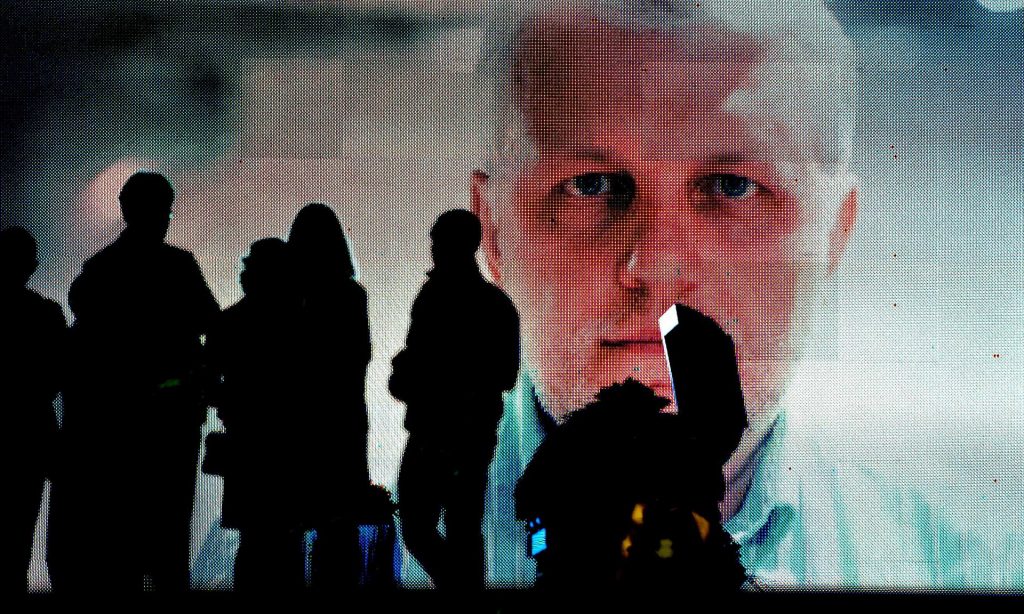
Photograph: Sergei Supinsky/AFP/Getty Images
Ukraine’s media community has been left shellshocked after the killing of prominent journalist Pavel Sheremet in a car bomb attack last week.
Although no motive has been confirmed, his friends and colleagues say his death is linked to his reporting, offering further evidence of the increasingly dangerous conditions in which many of the country’s reporters work.
Journalist deaths are rare and extreme events, harassment and intimidation are more common, but a silencing tactic that has quickly gained in popularity is the use of internet trolls.
I’ve experienced this type of abuse first hand. Earlier this month, the online TV company I run found itself the subject of a troll attack.
It started in early July when the press service of Ukraine’s joint staff, the country’s top military coordination body, released a statement on its Facebook page accusing my company, Hromadske, of smuggling a Russian journalist to the frontline in east Ukraine, where pro-Russian separatists are battling the national army.
Hromadske is a young TV and multimedia organization created in 2013 as a prototype of a public broadcaster in Ukraine.
Our journalists have frequently travelled to the war zone in the past two years. First, to cover the annexation of Crimea in March 2014, and then to report on the heavy fighting in Donetsk and Luhansk that followed.
All this time Hromadske has been an important source of information about the war. But now the government has accused our journalists of exposing the position of Ukraine’s troops, making them vulnerable to enemy fire.
As soon as the statement on their Facebook page appeared, something strange started to happen. In the first five minutes, the statement was shared more than 360 times. Within an hour, it became the most popular post on the joint staff’s press page. And then, almost all the activity suddenly stopped.
The join staff page was created in July 2014 at the height of the conflict in east Ukraine to inform the public about daily events on the frontline. It is managed by the press service, and a typical post gets just a few dozen likes and shares.
But the post about Hromadske spread like a forest fire. Reposts trashed our journalists, attacking their reputations and slamming their work.
The commenters were particularly critical of a report we had commissioned from Avdiyivka, in the Donetsk region, where heavy artillery is used against Ukraine’s troops almost daily, in violation of the Minsk peace agreements.
Journalist Nastya Stanko was filmed applying a tourniquet to stop a Ukrainian soldier from bleeding to death. Cameraman Kostyantyn Reutskiy carried another soldier to the ambulance. He died minutes later. Both reporters were shaken and shocked when they arrived back home.
A day later, Hromadske’s reporters were accused of exposing the position of the troops. By that time, the report had not even released on Hromadske’s website (and still has not been).
At some point we realised it was an organised attack. A source told us it was the work of three groups of trolls and a bot farm. Though we don’t know who commissioned the attack, we do know that their position was strongly pro-government.
The technical team at the Organised Crime and Corruption Reporting Project, an independent investigative journalism NGO, also analysed the unusual traffic and confirmed that click-farming did indeed take place. Deeper analysis is currently under way.
It was a shocking revelation. Has the government unleashed a troll army against independent journalists? Is a country at war with Russia using Kremlin-style tactics of lies and manipulation? But why would they?
One answer is that Hromadske’s journalists see too much. They see trenches that are waist deep, not nearly deep enough to protect the fighters. They see understaffed units, the sloppy work of press officers and attempts to stop journalists from reporting the real problems on the ground.
These stories often contradict the government’s own assessment of the situation and the stories circulated by commercial TV channels.
We spent the whole of last week debunking government lies. But the damage has already been done – our journalists are getting angry phone calls from the troops on the front lines, who accuse them of betrayal and disloyalty and no longer want to help them report.
Hromadske is not the only independent news organisation that has to face trolls and paid-for bloggers. All investigative journalists in Ukraine are currently under attack, and have even agreed to hold a joint brainstorming session about how to resist the abuse and fight the problem in a more systemic way.
But it might be difficult in the country there the word “Porokhobot” has become common. It’s a neologism made up of two parts: bot and Poroshenko, referring to president Petro Poroshenko. This one is going to be hard to fight.

